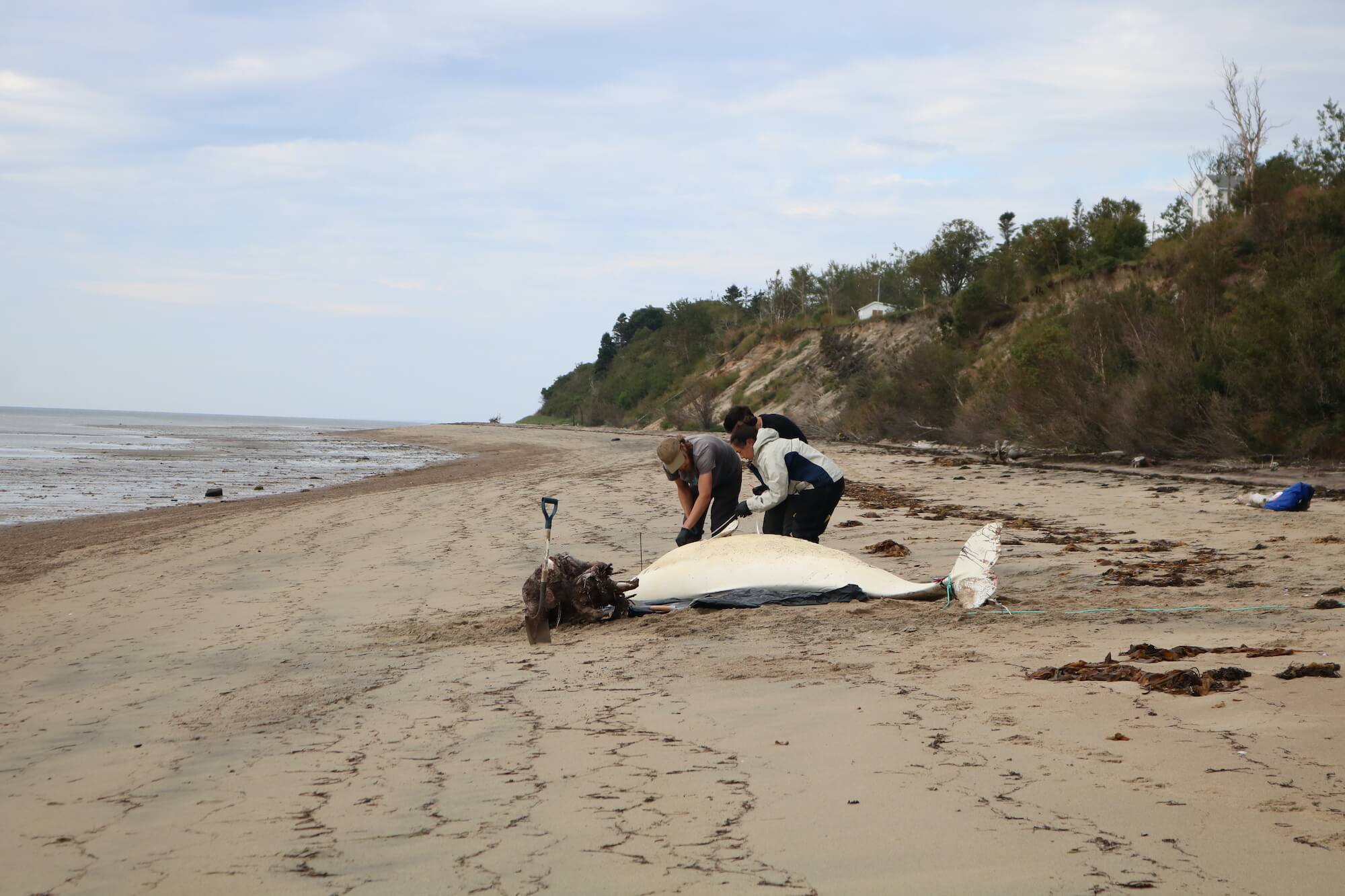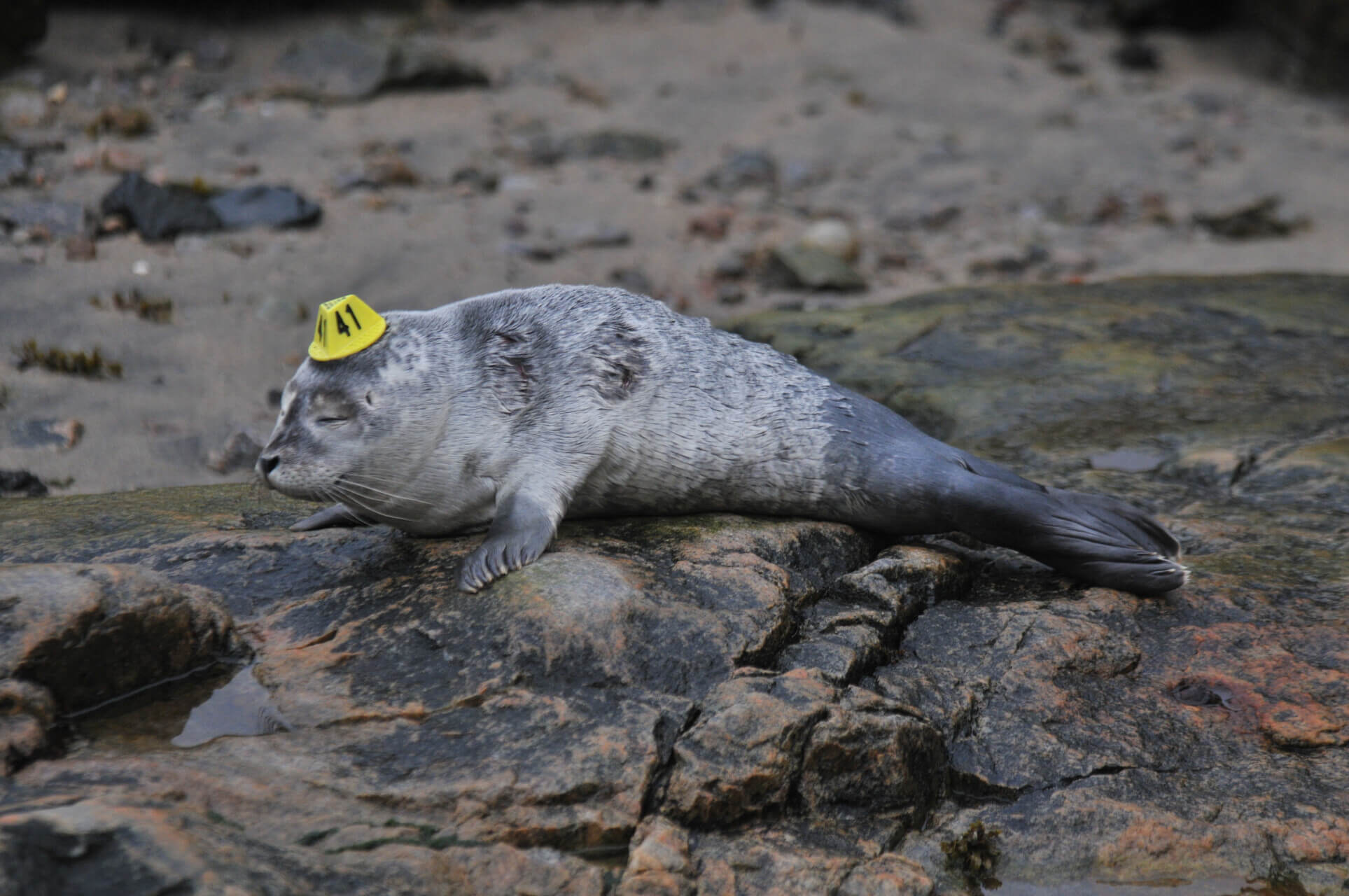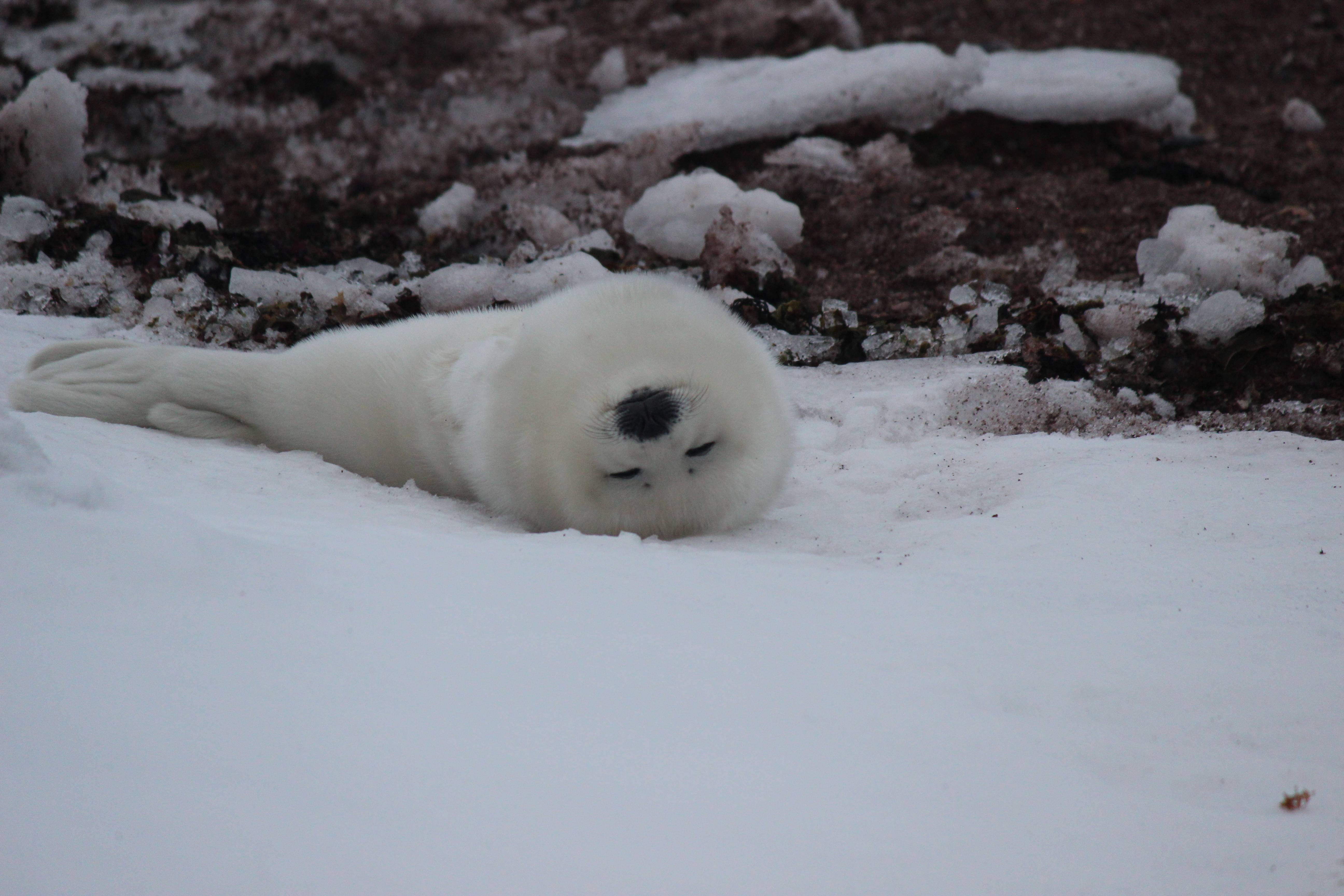The story has already generated its share of headlines: a whale, more specifically a minke whale, was found dead on the banks of the St. Lawrence (Fluvial Section) in Saint-Nicolas, a few kilometres from the bridges of Québec City.
On Sunday, May 1, a resident of Rue des Fauvettes takes a stroll along the shore and, on his way home, notices that a whale has washed up onto shore a few metres from his chalet. He is astonished, as it was not there two hours earlier and what’s more, an animal of this size and appearance had never been seen there before. The Quebec Emergency Response Network for Marine Mammals is notified, almost at the same time as the media. As is the case for every carcass reported to 1-877-7baleine, Network-trained volunteers head to the site in the morning to confirm the assumption made by the team; with their photos, there’s no more doubt: it’s a fresh male minke whale carcass. According to the measurement taken by the volunteers, it is a young individual, as it measures 4.1 m long, whereas adults measure between 6 and 9 m.

After the surprise come the questions.
Whales frequent the Estuary and Gulf of St. Lawrence and are usually not found as far upstream as the Charlevoix region. Why did this whale venture into the waters of the river and what did it die from? These questions remain unanswered, but scientists have a few theories. Is this a young animal that got separated from its mother? Was it disoriented? Was it sick? Did it become stranded alive following a navigation error? It’s impossible to answer these questions with certainty. One thing is for sure: the animal showed no obvious injuries or sign of collision or entanglement and the thickness of its fat suggested that it was in relatively good health.
Interest in science
The minke whale is not an endangered species and is not part of a systematic carcass recovery program, but is a target species for a multi-species research program led by Fisheries and Oceans Canada. Whenever possible, rorqual whale carcasses that wash up onto the shores of the St. Lawrence are sampled. If the carcass is accessible and there is no risk to the responders’ safety, pieces of skin, fat and muscle as well as baleen are recovered for analysis. The carcass was thus attached to prevent it from washing out with the subsequent high tides and veterinarian Stéphane Lair from the Université de Montréal’s faculty of veterinary medicine, accompanied by a team from the Aquarium du Québec, came to collect the samples on Tuesday.

This unusual situation has also motivated scientists to take their investigation one step further and consider performing a comprehensive necropsy of the animal. The goal: to obtain organ samples and conduct complementary analysis of certain tissues that could help further document this specimen and perhaps better understand the incident. However, several considerations should be taken into account when a carcass is opened, including whether or not it will be easy to dispose of afterwards. When a marine mammal becomes stranded on the St. Lawrence shores, the municipality in which the carcass is found, in collaboration with the Department of Sustainable Development, Environment and the Fight against Climate Change (MDDELCC), develops an intervention plan to remove the animal, which can be a nuisance for local residents, particularly with regard to odour. Large animals can represent considerable challenges! In the case of the Saint-Nicolas minke whale, the fact that it lay at the bottom of a steep cliff meant that it could not be recovered by land. It therefore had to be transported by sea. Consequently, the MDDELCC requested the assistance of the Canadian Coast Guard to tow the carcass to a boat launch ramp, from where it will be taken to a landfill. In the end, the partners involved in the operation requested that the carcass not be opened so as not to complicate this already tedious procedure. The whale will thus be removed on Thursday morning.
To learn more
On Whales Online (note that articles whose titles are in French have not been translated):
Les carcasses de baleines intéressent les chercheurs du Saint-Laurent
Marine Mammal Emergencies Reiterates the Importance of Reporting Dead or Vulnerable Marine Mammals
Analysis of Stable Isotopes and Fatty Acids
In the Media:
Pas d’autopsie sur le petit rorqual (Radio-Canada, May 4, 2016)
Un petit rorqual s’échoue près de Québec (TVA Nouvelles, May 3, 2016)
Un petit rorqual échoué à Lévis (Le Soleil, May 3, 2016)
Un petit rorqual s’échoue à Saint-Nicolas (Le journal de Lévis, May 3, 2016)
Un petit rorqual échoué sur les berges du Saint-Laurent à Lévis (Radio-Canada, May 3, 2016)
Un petit rorqual échoué à Saint-Nicolas (Première heure, Radio-Canada, 06:40, May 3, 2016)





